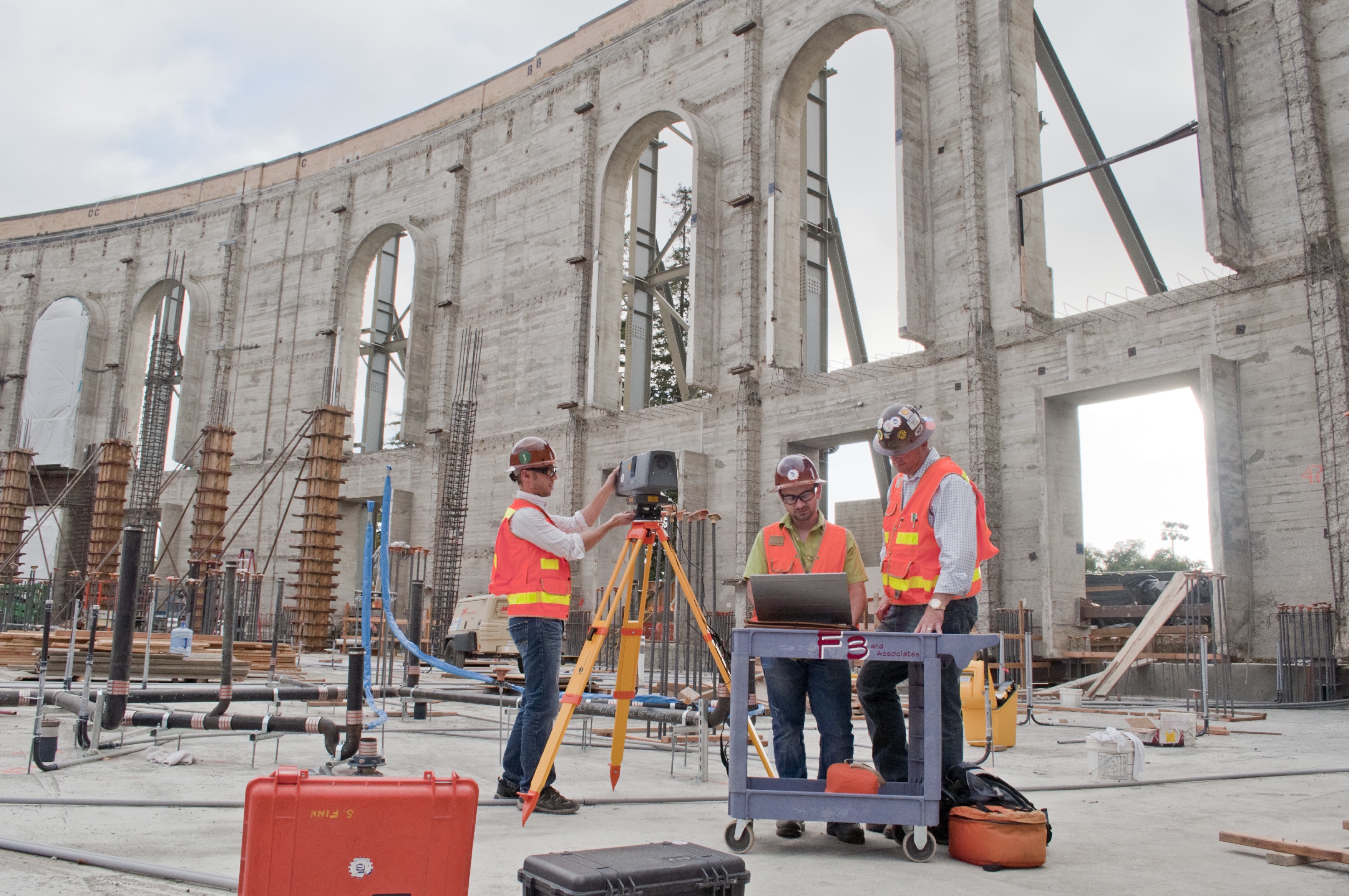Going from zero to three scanners in two years
BENICIA, Calif. – F3 & Associates’ first laser scanning job? “I got sick of setting up control for laser scanning companies, and then watching them come back and do QC points,” says Sean Finn, one of F3’s principals. So, the next job out, “Shell asked me to set up control for a laser scan and I said, ‘Why don’t I scan that for you, too?’ They said, ‘I didn’t know you offered those services.’ I said, ‘Of course we do!’
“Then I called Lieca, Topcon and Trimble to figure out the feasibility of renting a scanner.”
He ended up settling on a Trimble FX, as much for the support and responsiveness he’d experienced from Trimble as for feature set.
Of course, that first job ended up being a set of pipes like a bowl of spaghetti: “To this day, two years later, it would be intimidating,” Finn laughs. “And it was the first one that we did. We were even hanging the scanner upside down at one point.”
“After a really short period of time, though, I came to the realization that it’s just like land surveying,” Finn says. “You have to be conscientious of your environment and the equipment; you have to be conscientious with your controls. By the end, we did 25 scans, stitched them together, and handed it to the client.”
Finn quickly realized that the scanning was the easy part. A laser scanner is just another survey tool. “The software is really where it’s at,” he says. “Anyone can set the scanner up. Its’ what you do with the data that matters. We had to educate ourselves in a very short period of time to make this purchase work.”
Soon, all 15 survey crews that F3 runs in the Bay Area were promoting the scanner’s possibilities to clients, but the scan work didn’t exactly come streaming in. “It’s a hard sell,” Finn says. “It’s expensive technology, and the back end is expensive. And it’s hard to identify the finish line for the client.”
Often, the client just wants a piece of paper at the end, or a PDF. “They don’t care how it was generated,” Finn says. So F3 delivers that piece of paper, “and then we’ll sprinkle in a little magic with point clouds. We Disneyland it up a little.”
In order for those pdfs to have real value, though, like the ones F3 provided to the team renovating Cal-Berkley’s Memorial Stadium, the point clouds they’re drawn from need to be positionally correct on the Earth. This is where Finn thinks too many firms fall down.
Laser scanning “would have already exploded,” Finn thinks, “to the point where you’d be using it in houses, if it was done a little more responsibly. You have to have a discipline, to lock it down, to incorporate a survey … When you marry survey with scanning, it’s a very powerful tool. Its’ when you separate them that mistakes happen.”
Finn says one oil and gas firm brought F3 in and paid them $250,000 to correct a $45,000 scan.
This lack of quality georeferencing, along with a tendency for laser scan service providers to provide too little data, with not enough coverage, is holding the industry back, Finn believes.
“The scanning data is more accurate than any survey tool we have,” Finn reasons, “but it’s getting the survey to accuracy of the scanners positionally that’s important. It’s like painting a room. If you don’t take the time to prep and tape correctly, you can slap that paint up there really fast, but when you remove the tape, it’s going to look like crap.”
Perfection is all well and good, but doesn’t that eat into your margin?
Well, sure. At first. “It’s an investment,” Finn says. “And not just in the equipment. You’ve got to be willing to put in a ton of your own time. You have to pay guys to learn this thing.”
And, yeah, “there will be jobs I’ll have to do at cost,” Finn says, “but wouldn’t anyone want to sit in front of Shell or Chevron so that you can do a good job at cost and prove that your technology works and solves their problems? It’s a marathon, not a sprint.”
Just now, about two years in, Finn says jobs are starting to come in the door, rather than each one having to be laboriously sold. F3 now owns a CX and a GX, in addition to that first FX the company rented, but never left their possession.
He recommends survey firms invest in a phase-based scanner and a time-of-flight scanner, regardless of brand, right from the get go: “Whatever you’re doing, you need one of each.”
Currently, F3 is contemplating a fourth scanner. “If I’m working and I can’t service a client, I buy a piece of a equipment,” Finn says. “We’re close to that right now. We haven’t had a need for a fourth just yet. We’ve had all three scanners out working a few different times, but haven’t had to turn down any work. I’m assuming that’s coming by the time it starts raining here again.”






